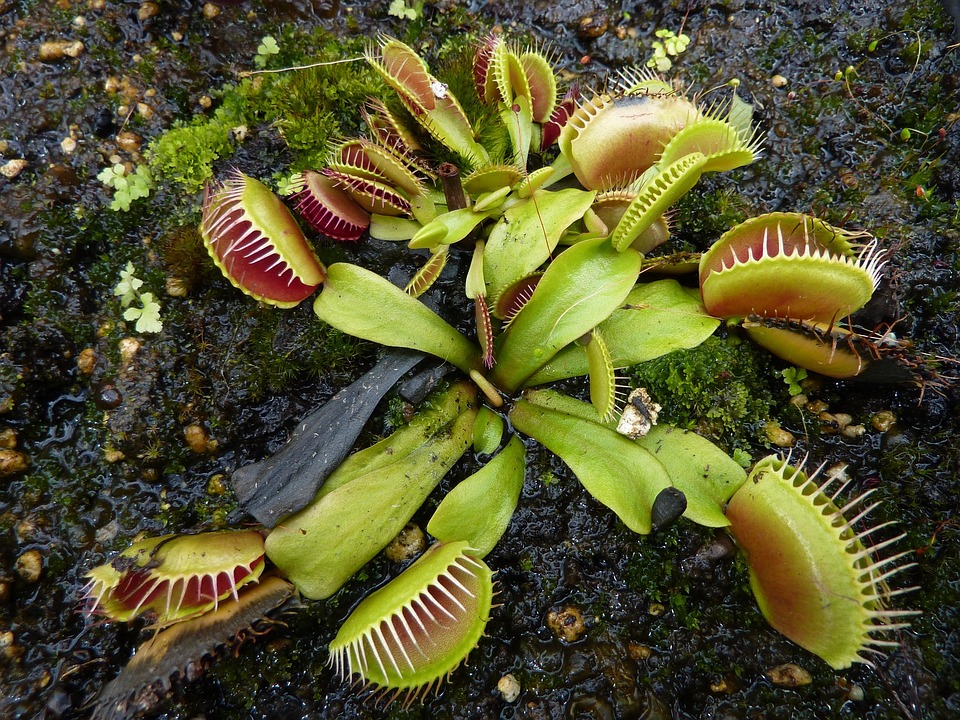
Venus Flytrap
Dionaea muscipula
Basic Information
🌿 Family: Droseraceae🗺️ Zone: 5-8
Other Names:
- Venus's Flytrap
🌡️ Ideal Temperature : 70°F – 95°F
🔥 Heat Tolerance: Up to 100°F
❄️ Cold Tolerance: Down to 20°F
🌱 Type: Perennial
Layers
- Ground Cover
Description
The Venus Flytrap is a small carnivorous plant native to subtropical wetlands of the United States, particularly North and South Carolina. It forms a rosette of 4 to 7 leaves, each divided into two regions: a flat, heart-shaped petiole capable of photosynthesis, and a pair of terminal lobes hinged at the midrib, forming the trap. The inner surfaces of these lobes contain red anthocyanin pigments and are equipped with hair-like trichomes that, when triggered twice within 20 seconds, cause the lobes to snap shut, capturing prey such as insects and spiders. This rapid movement is one of the quickest observed in the plant kingdom. The edges of the lobes are fringed by stiff hair-like protrusions or cilia, which mesh together to prevent large prey from escaping. The plant's unique trapping mechanism allows it to thrive in nutrient-poor soils by deriving essential nutrients from its prey.
### 🌞💧 Sun and Water Requirements:
Prefers full sun with at least 4 hours of direct sunlight daily. Requires consistently moist, acidic soil with good drainage; distilled or rainwater is ideal to prevent mineral buildup.
### ✂️🫘 Methods to Propagate:
Propagation is typically achieved through seed sowing or leaf cuttings. Seeds should be stratified before sowing, while leaf cuttings can be placed in a suitable growing medium to encourage root development.
### 🧑🌾👩🌾 When to Harvest:
Not applicable, as the Venus Flytrap is primarily grown for ornamental purposes and pest control rather than harvest.
Purpose
- **Pest Management**: Captures and digests insects, aiding in natural pest control.
- **Wildlife Attractor**: Attracts insects, contributing to local biodiversity.